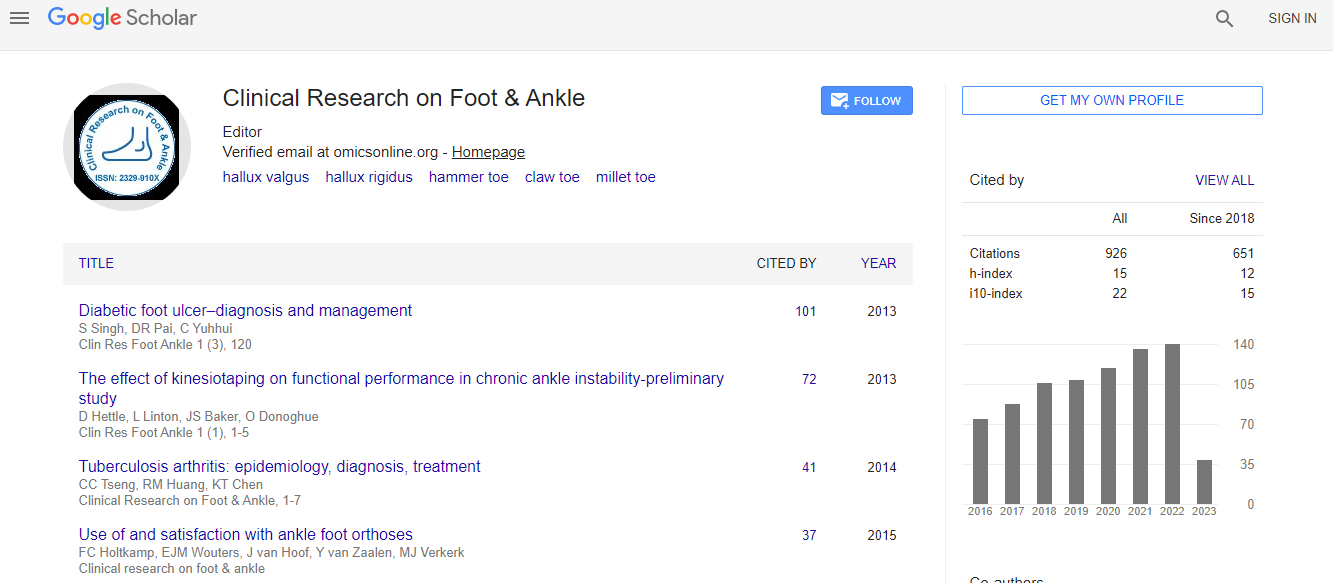Research Article
Venous Thromboembolism Prophylaxis in Patients Immobilised in Plaster Casts
Cezary Kocialkowski, Abhijit Bhosale and Anand Pillai*Department of Trauma and Orthopaedics, University Hospital of South Manchester, United Kingdom
- *Corresponding Author:
- Anand Pillai
Consultant Orthopaedic Surgeon, Clinical Research Fellow
Department of Trauma and Orthopaedics, University Hospital of South Manchester
South Moor Road, Wythenshawe, M23 9LT United Kingdom
Tel: 01619987070
E-mail: anand.pillai@uhsm.nhs.uk
Received date: Jan 12, 2016; Accepted date: Sep 03, 2016; Published date: Sep 19, 2016
Citation: Kocialkowski C, Bhosale A, Pillai A (2016) Venous Thromboembolism Prophylaxis in Patients Immobilised in Plaster Casts. Clin Res Foot Ankle 4:203. doi:10.4172/2329-910X.1000203
Copyright: © 2016 Kocialkowski C, et al. This is an open-access article distributed under the terms of the Creative Commons Attribution License, which permits unrestricted use, distribution, and reproduction in any medium, provided the original author and source are credited.
Abstract
Introduction: Lower limb immobilisation in plaster is associated with a risk of venous thromboembolism. It has been demonstrated that prophylaxis with low molecular weight heparin can reduce this risk. Recent guidelines have therefore recommended thromboprophylaxis for all patients immobilised in plaster and with one further risk factor.
Method: In order to standardise the thromboprophylaxis process, our trust recently developed a risk assessment tool, for all patients with a lower limb fracture immobilised in plaster. Patients are scored on a variety of risk factors and if judged to be sufficiently high risk, are prescribed low molecular weight heparin.
Results: Regular audit of the process has shown that good compliance can be achieved. In addition root cause analysis has only demonstrated three cases of venous thromboembolism, since the introduction of the tool, which suggests that the assessment can accurately differentiate high risk patients.
Conclusion: A risk assessment tool for lower limb immobilisation can be used successfully to target high risk individuals with thromboprophylaxis. This process ensures that all patients are correctly risk assessed and that low risk patients are not over exposed to the risks of low molecular weight heparin therapy.

 Spanish
Spanish  Chinese
Chinese  Russian
Russian  German
German  French
French  Japanese
Japanese  Portuguese
Portuguese  Hindi
Hindi 
